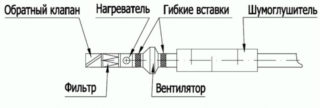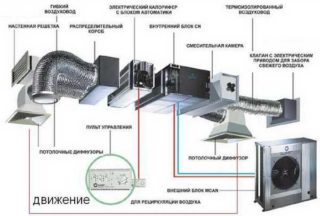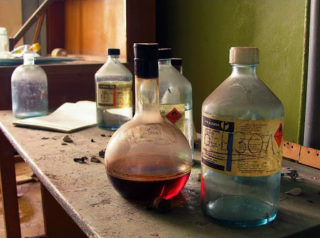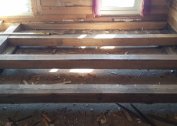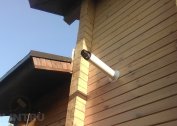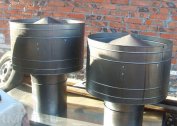Installations with air intake from the room are used with a large ventilation system capacity, when it changes from 2 to 15 thousand m3 / hour and is adapted for private houses with low productivity. The recirculation system delivers a mixture of internal and cooled external flow into the room. During testing, the compliance of the volume with sanitary standards, the absence of toxic and harmful impurities are checked.
The nature and purpose of recycling

The removed air is already heated to a certain temperature, its mixing with the flow coming from the outside allows you to reduce the power of the heater. The mass is passed through a charcoal filter before reuse for cleaning. Increases energy efficiency, it is allowed to use up to 80% of internal air.
Purpose of the hood in recirculation mode:
- the formation and maintenance of a comfortable climate for humans and animals within the framework of the structure, as well as plants and objects of the material sphere (valuable artificial works, technological equipment);
- saving material resources for the functioning of organized ventilation.
In a streamlined recirculation system, engineering devices operate sequentially, cool or heat flows. Operating modes are different, for example, the system operates in the presence of people or night time schedules are selected. The procedure for cleaning and conditioning is set separately for the weekend and working hours, set for a certain period.
Ventilation recirculation principle
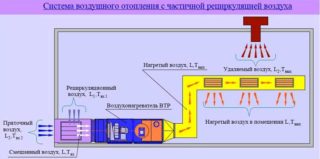 The supply and exhaust system with recirculation is a complex installation in technical terms and requires organized coordination and control.
The supply and exhaust system with recirculation is a complex installation in technical terms and requires organized coordination and control.
Elements included in the complex:
- two electric fans, on which the flow and air flow depend;
- the recirculating energy exchanger heats the street atmosphere, mixes the supply and exhaust flow;
- filters clean the jets from the external duct, process internal flows before being fed to the heat exchanger;
- an electric heater warms the outside air if there is not enough heat from the internal stream;
- duct valves are placed at the inlet and in front of the outlet, regulate the power of the jets or block the channel when the equipment is turned off.
The heating or cooling of the atmosphere in the room occurs quickly due to the multiple passage of the jets through the circulation heat exchanger. The exhaust gas recirculation mode is also used if it is necessary to stop the flow of outside air into the room (unpleasant odor, dust).
Types of ventilation with recirculation
It is planned at the design stage before the start of the construction. Installation of ventilation in an already finished house is coupled with the fact that you need to embed and place channels, suspended air ducts, grilles, diffusers. In old rooms, air exchange partially occurred due to gaps in the window frames.
Modern sealed structures limit the flow of air, prevent drafts, so after the installation of metal-plastic fillings, ventilation is required. The reinforced inflow invariably increases heating costs, so it is advisable to reuse a cleaned and heated air mass.
When calculating and installing a recirculation hood, the regulatory rules are observed:
- the volume of the supplied street stream is at least 20% of the secondary air mass;
- in the finished mixture after processing does not contain more than 30% of harmful components of the total amount at the norm.
Recirculation ventilation reduces the load on air handling units, for example, air conditioners, air heaters.
With heating
The system uses cold or heat from technical devices that heat new air and mix it so that it is removed from the room. Supply and exhaust fans, heater are turned on. Valves are opened for the passage of street, exhaust and recirculation flow, each operation is set in a certain mode.
Varieties of heat exchangers:
- cross plate-type energy exchangers show efficiency in operation at the level of 50 - 90%, the appearance of condensate is allowed in them;
- rotational rotary heat exchangers of rotary type are characterized by increased efficiency in the range of 70 - 90%, due to the presence of moving elements they are able to redistribute odors between the mixed jets;
- recuperators with an intermediate heater in their design operate with lower efficiency (45 - 65%), the advantage is expressed in good insulation of the energy generator.
Using the system saves energy for heating or air conditioning. For example, a circulation hood for the kitchen removes excess heat, if it is not needed, cleans it, uses it when mixed with cold air, and delivers it to where it is needed.
No heating
An unheated recirculation system provides fresh air and the removal of used mass from rooms, while updating occurs continuously, rather than in separate episodes. This reduces noise, the amount of dust, harmful insects that fall into open openings. The circulation taps in the hood are located so that drafts and sharp kitchen smells do not act on those present.
The purpose of the recirculation duct without heating is only to inject fresh air in the off-season, when the heating system is working, but the air in the street warms up. This becomes possible if the technical indicators of street flows comply with sanitary standards.
The supply and exhaust fans turn on, the air heater does not work. The recirculation valve coordinates the temperature of the jets entering the room. An external valve controls the temperature of the outside air.
Supply and exhaust ventilation
If in such a system open the outlet and supply air valves and close the recirculation plug, the line will work as simple ventilation. It is possible to direct flows in a closed ring without supplying an atmosphere from the street, if you close the supply and output valves and open the recirculation valve.
Partial opening of the three valves leads to the organization of air supply with the addition of a fresh atmosphere. Thus, an optimal ratio of temperature indicators and the degree of oxygen saturation is achieved. The choice of one of their schemes allows you to maintain comfort in hot or cold climates. The supply and exhaust system is installed in large rooms with a significant concentration of people, for example, restaurant, train stations, supermarket trading floors.
Additional schemes
A system of movement of air masses using a channel air conditioner is used. Fancoil is an internal integrated device of the air conditioner, functioning in the form of an active battery. It has condensate drainage, an energy exchanger, a filter device and a fan. In summer, the heat exchanger is supplied with cold water (10 - 12 ° C), in winter hot liquid is supplied from the main (up to 60 ° C).The fan coil is equipped with a control unit and automatic temperature control devices.
The circuit with the use of dampers works in the form of exhaust and supply ventilation or mixes incoming and outgoing flows. The system is used in private buildings, for example, as a hood with recirculation for the kitchen. The temperature values of the outside atmosphere change, and the comfort value has a constant value. The volume of mixed masses is regulated by overlapping shutters and dampers in automatic or manual mode.
The movement of air masses indoors using a ceiling fan eliminates stagnation of the masses in one part of the hall, but does not apply to a full-fledged recirculation scheme. These fanless systems are used in large rooms, halls, foyers, and vestibules.
Where recycling is prohibited
Recycling of the removed air is not allowed if it comes from rooms with pathogens, fungi, microbes, the concentration of which exceeds the permissible standards. Do not use streams from workshops or industrial facilities with a pungent odor.
Do not put a recirculation hood in such situations:
- a significant mass of harmful components of hazard category 1 and 2 is allocated;
- harmful substances rise into the air in contact with the heating elements of the heat exchangers, but there are no filters in front of the air heaters in the system;
- the premises belong to class A and B (this does not include thermal and air curtains at the entrance);
- explosive air formations of their vapors and gases appear;
- around the equipment of premises of class B1 - B4, D and D there is a danger zone (air is not taken in a radius of 5 meters from the machines).
Air is taken out to the street if laboratory stands are in the room and work is underway with harmful components or the premises are vestibule locks.
Advantages and disadvantages of the system
The advantage is that you can simultaneously create the required modes in the whole building using automatic control. The duct layout is done using standard ventilation elements. Work is coordinated by remote controls that control the degree of heating or cooling.
The disadvantages include working in full recirculation without the use of outside air. Air is not updated by mixing, so you can set the mode only for a short period. The air of not all rooms can be used for mixing, therefore, in hazardous conditions, another microclimate update must be provided.

